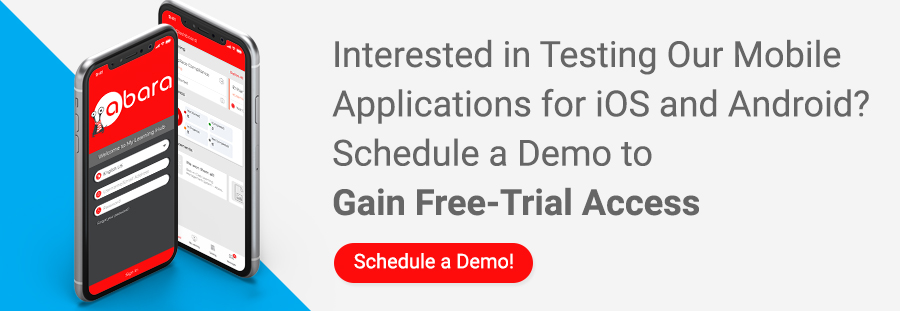Training strategies must account for varying employee learning habits. If your training strategy is not multi-layered or simply put, “it’s just flat,” it most certainly will not resonate with all your employees.
Also, most employees are resistant to development activities. Single-tiered training does not motivate employees to actively pursue it. To avoid such cases, your training must account for varying employee learning habits in order to appeal to everybody. Furthermore, accounting for varying learning habits also help people who actively want to learn and develop, but face difficulty with training.
On this Page
So, how to account for varying employee learning habits?
Devise Training Activities that Find a Middle Ground
One way to do this is by surveying your learners. What do they want to learn? How would they prefer it? Anything that can aid them with learning more easily?
Analyzing the results from surveys helps in devising training activities that fall right in the center. It’s the closest you can get to meeting everybody’s wants and is most probable to succeed.
So go ahead and conduct surveys and one-on-ones, it will certainly help you with devising an optimum training plan.
Use More Video When in Doubt
Sometimes, surveys don’t work because not all employees participate. But, that doesn’t mean you ignore them. In fact, it’s a sign to think about your training program with increased concern as a lack of response shows disengagement.
Now that you don’t have a clear picture about what your employees want, what do you do?
We recommend — when in doubt, go with videos!
More than 5 billion videos are watched on YouTube every day by over 1 billion people which is 14% of the global population. This confirms what Forrester Research reports—employees are 75% more likely to watch a video instead of reading through PDFs, Word Documents, and PowerPoint. To further compound all of this, 65% of the training is retained when delivered in an audio + video format as compared to 30% when only reading.
So, when unsure about your employee’s learning preferences, go with videos!
Mentoring Programs
The primary reason for your employee’s disengagement can be very difficult to pinpoint. Especially when the people planning such training activities are not in direct and constant contact with the learners. Determining if a training process is faulty or external reasons are contributing towards failed training programs becomes a matter of guesswork.
But, there is a solution to this, in the days of old it was called mentorship, in today’s times, with a bit of added zing, we call it Social Learning.
Only an employee understands another employee’s challenges. And, when development is the objective, leverage a special breed of employees to solve the training problem. We are talking about those employees who succeed at everything they do when compared to the rest.
Mentors are certainly doing something right at the ground-level where it matters. And, harnessing their success stories by asking them to mentor their colleagues is definitely something to add to your training program.
However, such people are few and far apart, hence it is best if their skills are utilised over an LMS with Social Learning feature. This way, they reach out to a greater audience at once.
In situations where even video-based training does not work, mentoring via social learning applications on the LMS is a viable option. It adds a human touch to the training program and allows one employee to help other employees learn on a personal level.
Think about it, wouldn’t you prefer the guidance of a mentor over learning on your own?
Blended Learning
Blended learning is a combination of traditional and eLearning. It’s a safe bet to place when unsure about your employee’s learning habits.
A combination of classroom-based training supported by eLearning ensures your employees are given a personal touch while some parts of the training are still in their control.
It works because it’s a combination of training styles which caters to learners on both ends of the spectrum. In fact, this has always been one of its primary goals!
Base Training Type on the Jobs Role to Match Learning Habits
A salesman will prefer video-based training where he can visualise the entire sales process. A tele-sales personal would prefer listening to audio files to better understand responses. A software engineer prefers assessment-centric training which tests knowledge. Hence, it’s safe to provide training to specific job roles.
Basically, if you try hitting two birds with one stone by investing in one type of training for all job roles, chances are, one of them will fly away.
A software engineer will appreciate video-based training. But if testing their knowledge in real-time is something they can’t do, it won’t make sense to them. What they really need is a video-based training module with a stronger focus on the assessment engine to try out small sections of code.
Also, a person’s profession presents an almost clear idea into the type of training they’d accept. So, it’s a good place to start.
Accounting for Varying Learning Habits is Crucial
Accounting for varying training needs is very important when designing development initiatives. So, maintain a balanced approach and prod and poke your learners into revealing their learning preferences. When unsure, take a safe path like using videos and blending training. And, to maximise training impact, let employees help their colleagues.
At Abara LMS, we have over 12+ years of experience in the eLearning domain. Our learning management system is an all-rounded training platform which takes into account the varying training needs of employees. To try our platform, reach out to us at contact@abaralms.com or click here am to schedule a demo with one of our representatives. Also, custom eLearning courses are something we excel at. Find out about our offerings herea.
Till then, happy learning!

